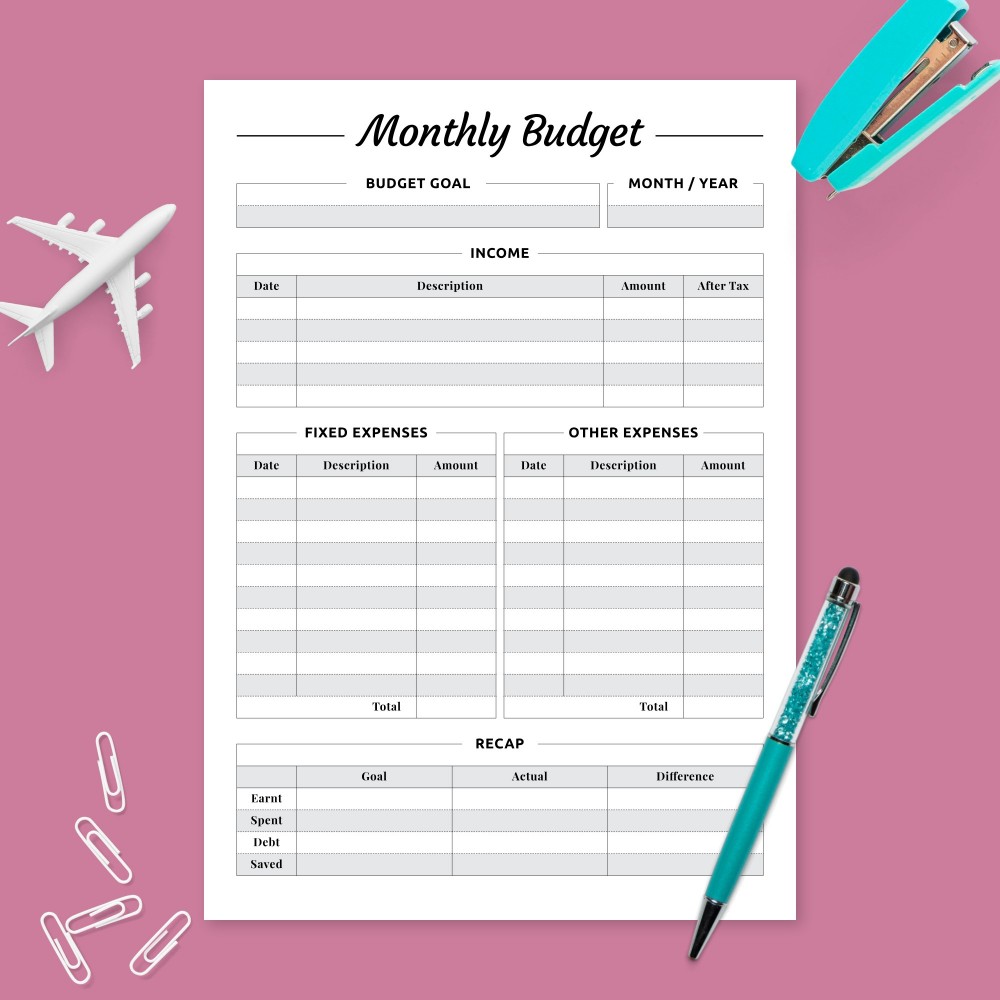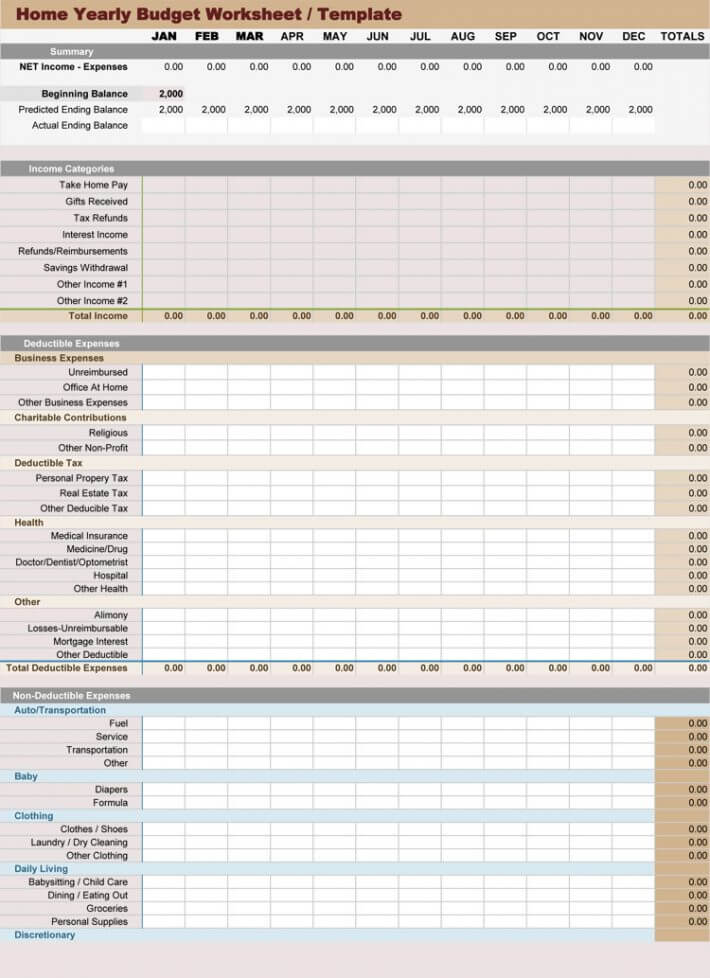
BUDGET PLANNER TEMPLATES PC
Q: How can I print my budget or save it as a PDF?Ī: If you're using a desktop/laptop, use the print menu in your browser or press Ctrl+P on a PC or Command+P on a Mac. Select 'Create new budget'.Īny budgets saved onto your computer or mobile device will appear in the menu. Q: How do I create and access multiple budgets?Ī: Click on the menu in the budget planner header. If you are looking for something more detailed, you could consider buying bookkeeping software.

BUDGET PLANNER TEMPLATES UPDATE
We suggest you update your budget with actual income and expenses on a regular basis to make it as accurate as possible. Q: Can I set a monthly budget and compare this with actual income and expenses?Ī: No, the budget planner gives you a snapshot of what you spend your money on. You can also change the currency symbol under settings. But you can add your own sub items by clicking on the link. You cannot change the label of the default items in the budget planner. To add your own items, go to settings and choose "enable custom items". If you save it to your cloud storage, you can access it from multiple devices or share it with your partner.Ī: Yes.

The Excel spreadsheet version allows for some customising (like renaming fields). Save the budget spreadsheet: Save your budget to your computer by using the Excel spreadsheet version.Disable the autosave function by switching to "off". Your data may be lost if you change your device or clear your cache. Autosave option: Your budget data is automatically saved onto your computer or mobile device, so you can come back to it later.Add these amounts back into your income, then include them in your expenses. Documentation required: For a more accurate picture of your finances, check your payslip for any deductions made in addition to tax (like superannuation, health insurance, company car).(Note: your results will be skewed if you don't set the right payment frequency.) Frequency: Set payment frequency for each item - weekly, fortnightly, monthly, quarterly or annually.Or you might be able to save more if you get a pay rise or you pay off some debt.This calculator helps you work out where your money is going, and whether your income covers your expenses. Your budget needs to work for you and your lifestyle so it's important to adjust your budget as things change.įor example, if your expenses start to increase you may need to reduce your spending, or change your savings goal. Even a small amount set aside regularly will make a difference. Having some savings can create a safety net for unexpected expenses. Once you know how much money you have for 'wants', you can work out how much of it you'd like to save. If you have a savings goal you can use your budget to work towards it. This will help you to see where it goes and keep within your spending limit. Make a plan for what you want to do with your spending money. Your spending money is for 'wants', such as entertainment, eating out and hobbies. The money you have left after expenses is your spending and saving money. If you tracked your spending, use your list of transactions. Include what the expense is for, how much and when you pay it. To make sure you've recorded all your expenses, look at your bills or bank statements. family costs, like baby products, child care, school fees and sporting activities.

BUDGET PLANNER TEMPLATES REGISTRATION
transport costs, like car registration or public transport.household expenses, like food and groceries.Regular expenses are your 'needs' - the essential items you need to pay for to live. This money could be from your wages, pension, government benefit or payment, or income from investments. how often (weekly, fortnightly, monthly or yearly).Make a list of all the money coming in, including:

If you don't have a regular income, work out an average amount. Record how much money is coming in and when. For example, if you get paid weekly, set up a weekly budget. Use how often you get paid as the timeframe for your budget. You can put aside money for bills and expenses and set up a plan to reach your financial goals.įollow these steps to get started. Having a budget helps you see where your money is going.


 0 kommentar(er)
0 kommentar(er)
